
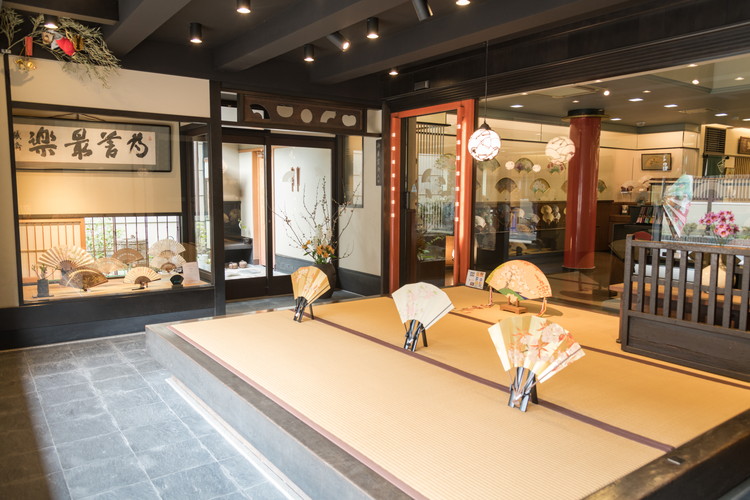
Folding fans are the culmination of Japanese aesthetics over time. Miyawaki Baisenan has been manufacturing and selling all of its products in-house since its founding in 1823 (Bunsei 6). The process of making a folding fan can be divided into 80 or more steps if counted carefully are all craftsmanship inherited by the artisans. Japanese painter Tessai Tomioka named the store, and its trademark, “Miya Kosen” written by Tamemoto Reizei, has encouraged the exchanges among prominent cultural figures. Its main store in the center of Kyoto is a sophisticated modern space that retained the appearance of a stately merchant house from the early Meiji period. Inside the store, Kyoto fans of every type are beautifully displayed: dancer’s fans, summer fans, fans for tea ceremony, ornamental fans, and cypress fans. Additional highlights from ceiling paintings by Japanese painting masters and decorative fan paintings on the walls to valuable old fan materials and artworks are effortlessly arranged throughout the store to satisfy visitors’ aesthetic experience.
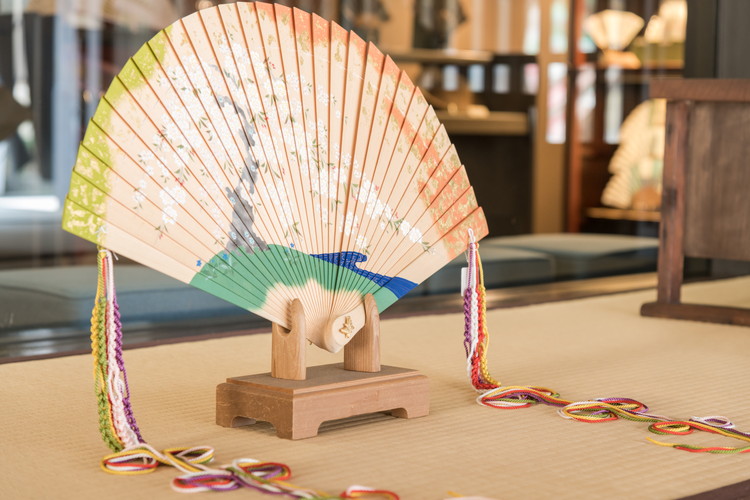
Beautifully displayed at the front of the store is a cypress fan that was used in the palace in the old days, and it serves as a prototype for modern fans.
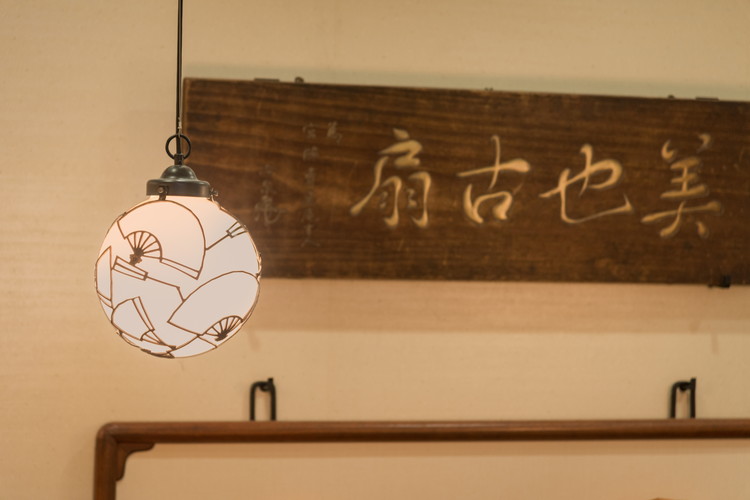
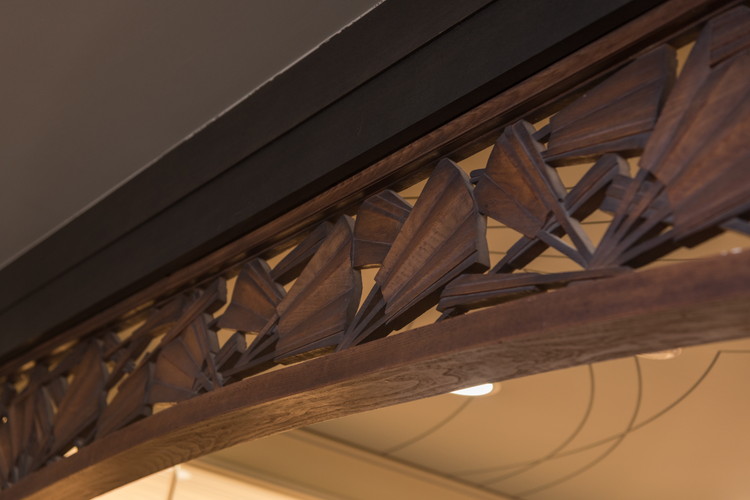
Inherited from the old store before its relocation, fixtures such as transom and lamps that reflects history enhances the store’s refined atmosphere.

The main feature on the first floor is summer fans. It includes a wide range of products from a high-end line of hand-painted designs to reasonably priced designs that changes every year.
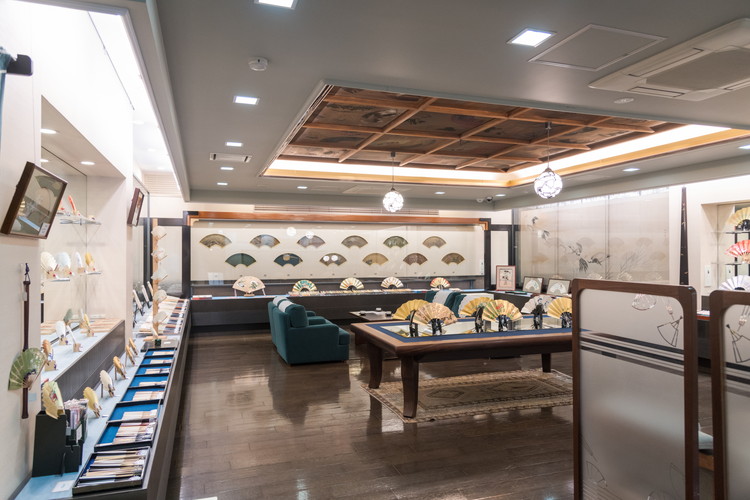
Decorating the walls on the second floor are Japanese fan paintings from Gyokudou Kawai as well as paintings from other well-known artists of the Edo period. Works from contemporary Japanese painters such as Rieko Morita are displayed on the first floor.

The ceiling painting on the second floor is recognized as an Important Cultural Property. 48 masters representative of the Kyoto art scene painted the fan designs in 1902, and it attracted a lot of attention at the time.
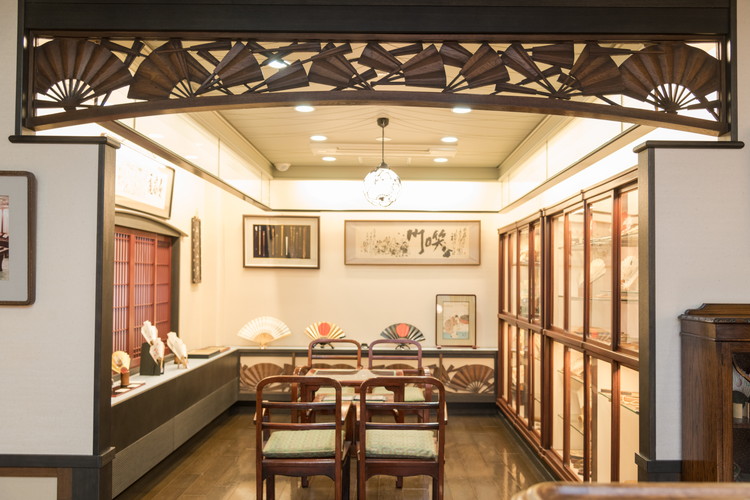
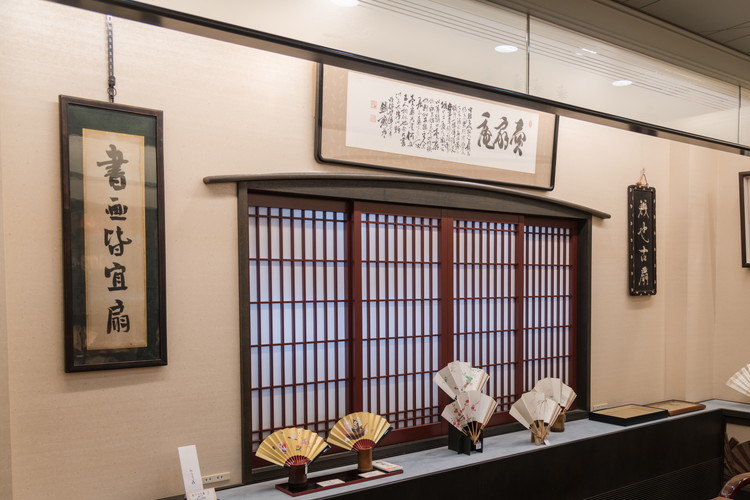
This is a gallery corner that contains collections of old fans and books from a network of deeply connected cultural figures. Famous Japanese painter Tessai Tomioka named the store and Tamemoto Reizei wrote its trademark “Miya Kosen”.
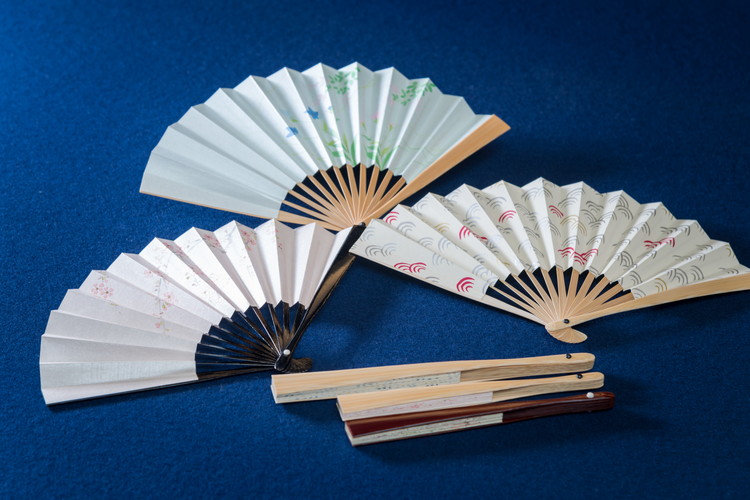
Even the tea ceremony fan ribs expresses beauty when opened. The store also offers customized consultation to make fans for various purposes including celebrations.
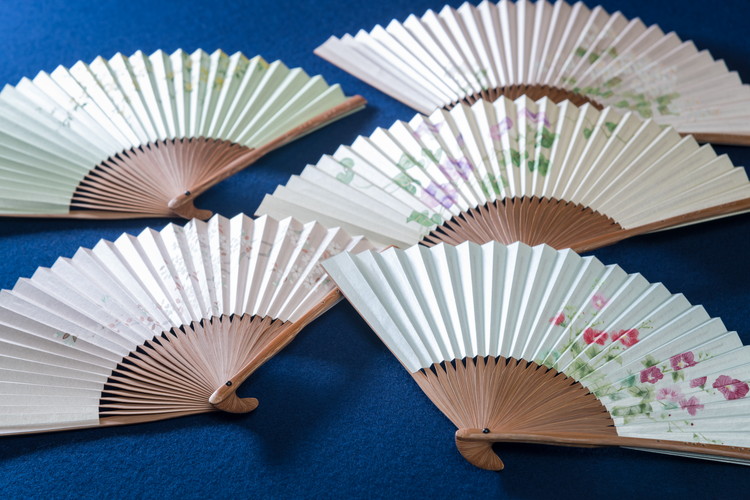
These are hand-drawn fans for women. The delicate color patterns and the flowing brush strokes by the skilled painters all convey Kyoto’s elegant aura. A new product that will be released soon is a fan featuring the original painting by the Japanese painter who has attracted wide attention—Ayuko Sadaie.
Purchases can also be made from the online shopà http://www.baisenan.com/top.php
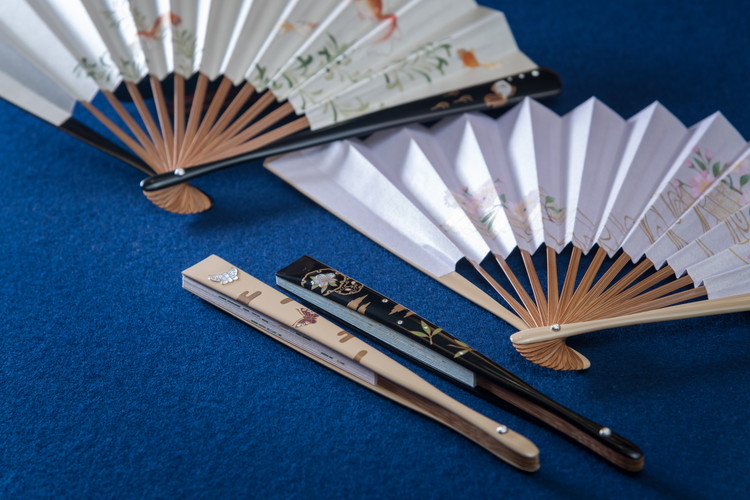
It was announced that an even more luxurious fan containing diamonds was made while utilizing urunishi and makie techniques (Japanese lacquering techniques) to create traditional Japanese designs. The fan is a collaborative work with the Belgian diamond maker Grunberger who has had a deep interest in traditional Japanese culture.
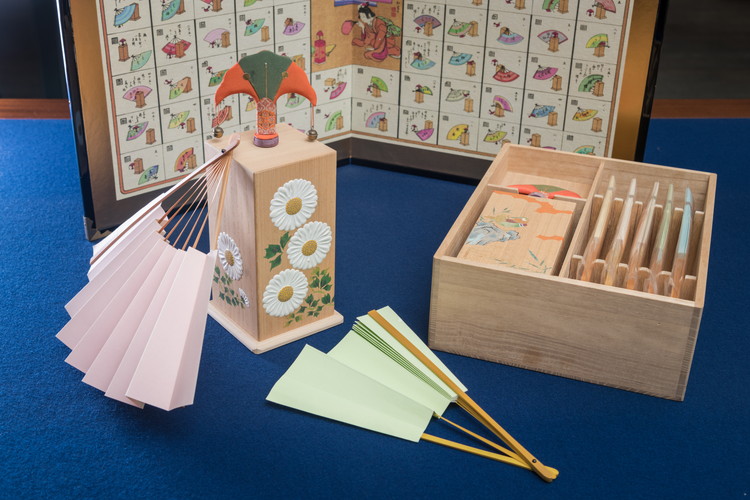
The elegant “tousen” (throwing fan) game is theorized to have begun with a person who just woke up from sleep trying to aim his fan at a butterfly that was resting on a pillow. The entire set for the game, “tousenkyō”, can be used not only for its original entertaining purposes but also for interior decoration.
| Locations | 80-3, Daikoku-cho, Tominokoji, Rokkaku-dori, Nakagyo-ku, Kyoto City, Kyoto |
| TEL | +81-75-221-0181 |
| FAX | +81-75-221-0439 |
| Opening hours | 9:00am to 18:00pm (Until 19:00pm during the Summer) |
| Closing hours | No closing hours (except End of the year and New year’s holidays) |
| Locations | Sagami Building 1F, 7-13-6, Ginza, Chuo-ku, Tokyo |
| TEL | +81-3-5565-1528 |
| FAX | +81-3-5565-1529 |
| Opening hours | 10:00am to 18:00pm (Until 19:00pm during the Summer) |
| Closing hours | No closing hours (except End of the year and New year’s holidays) |
<